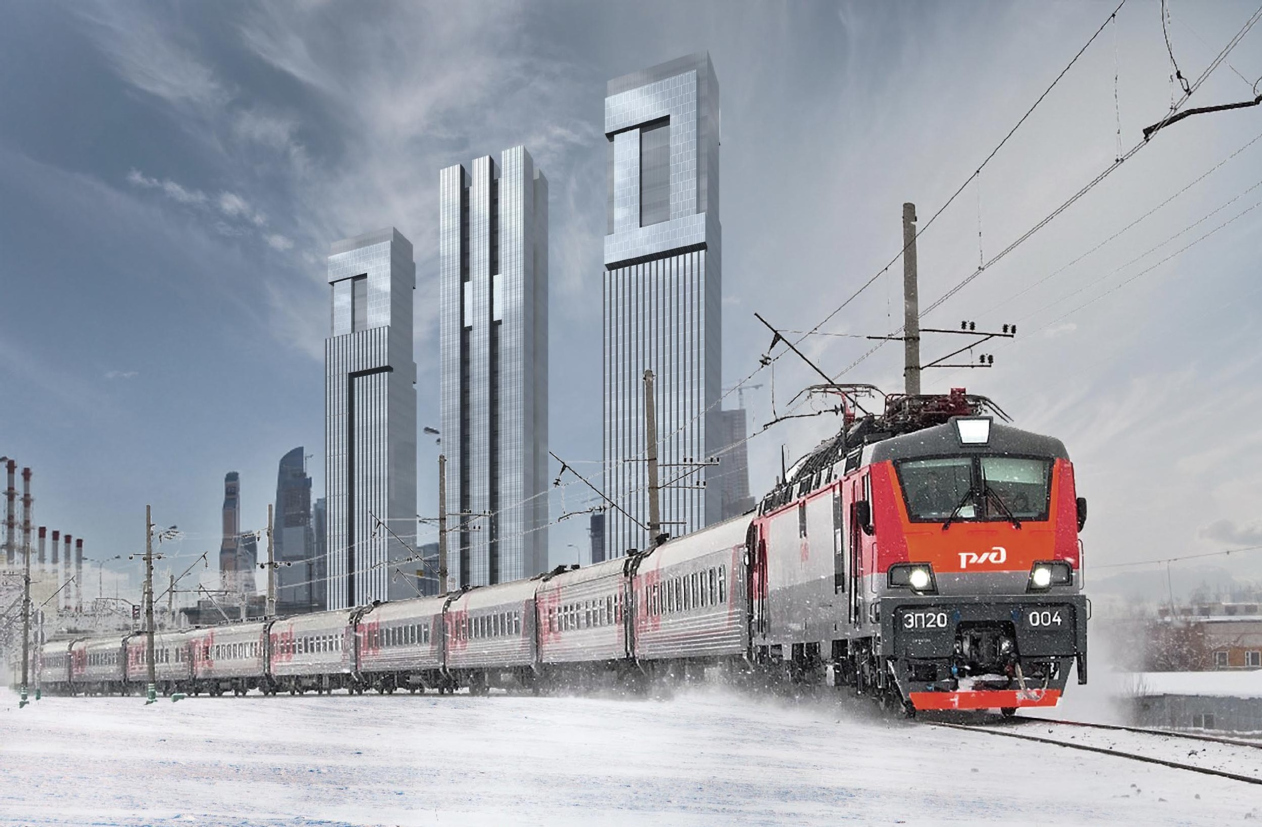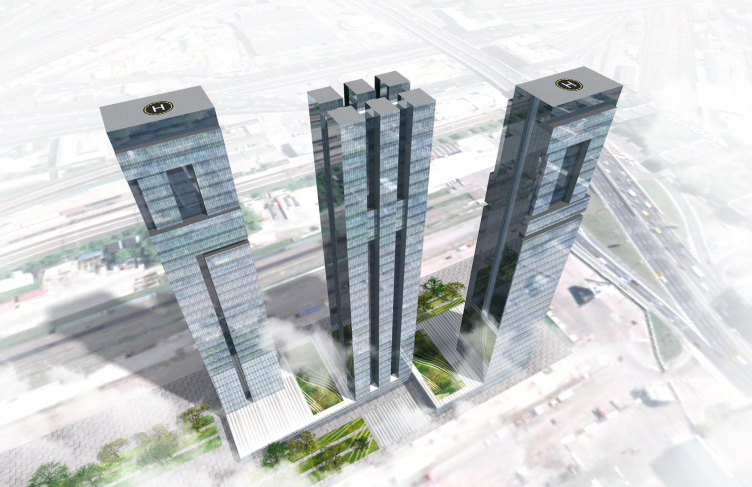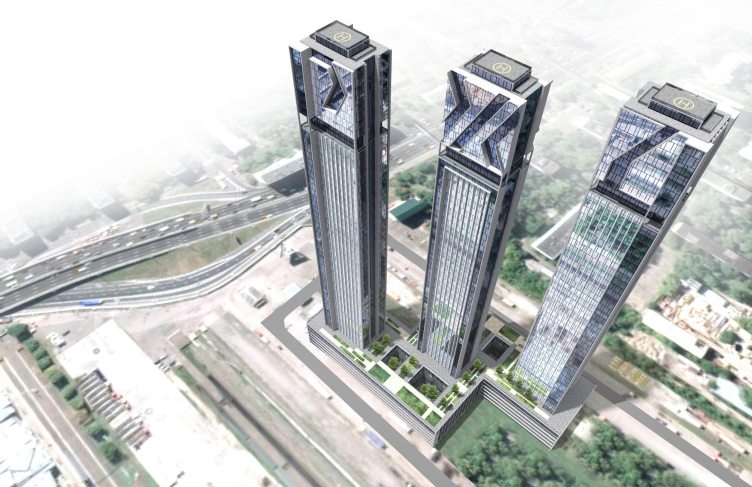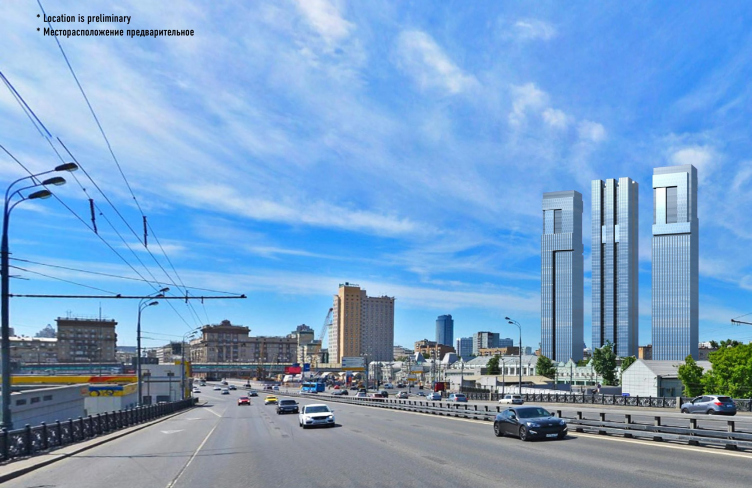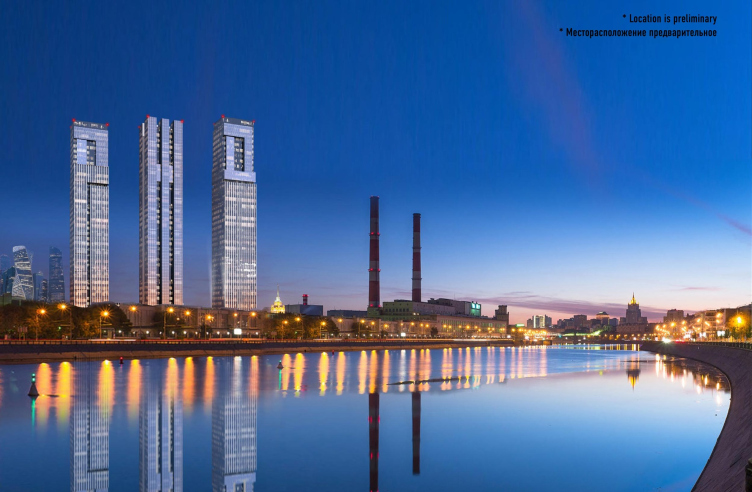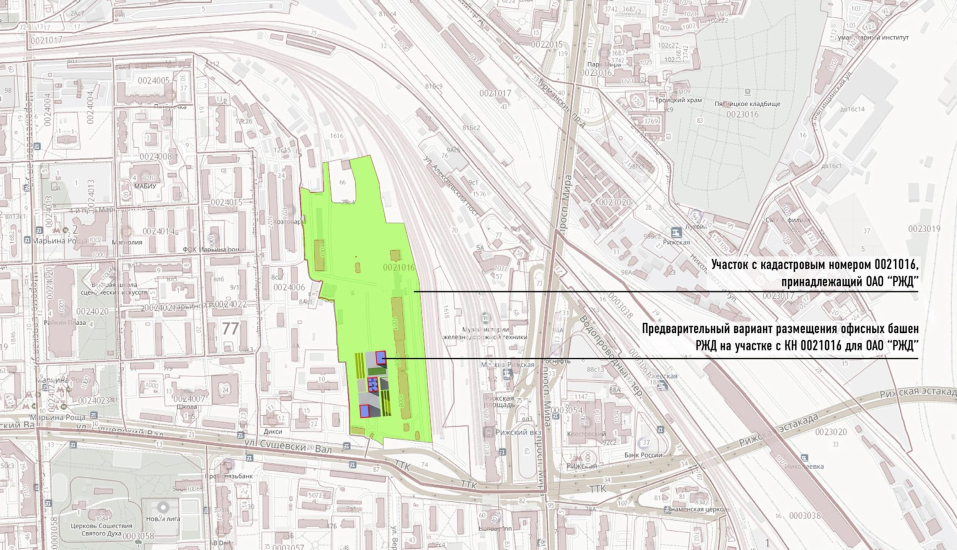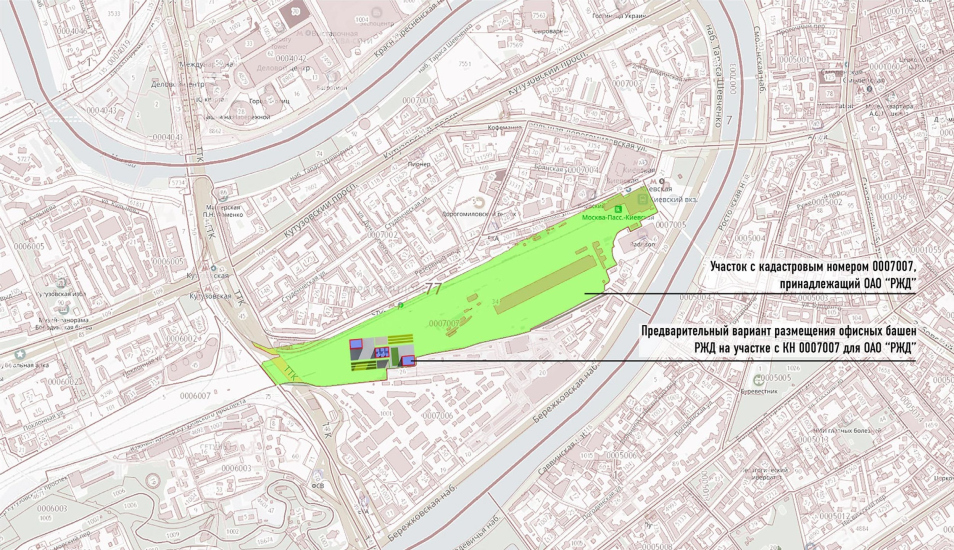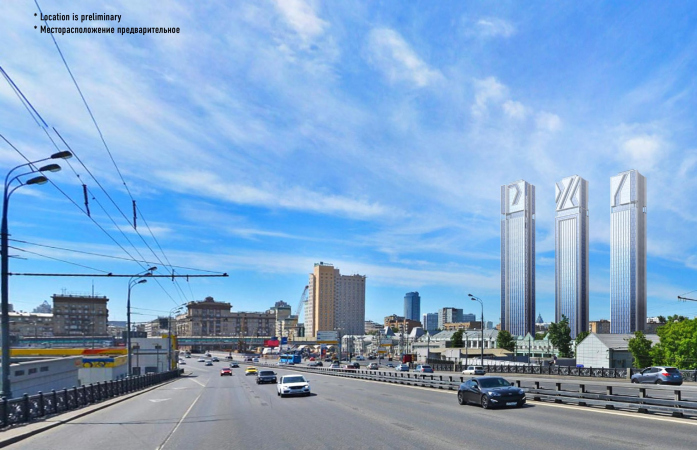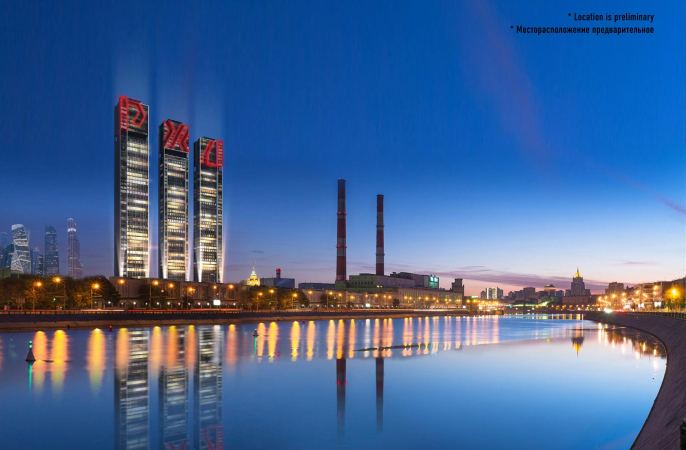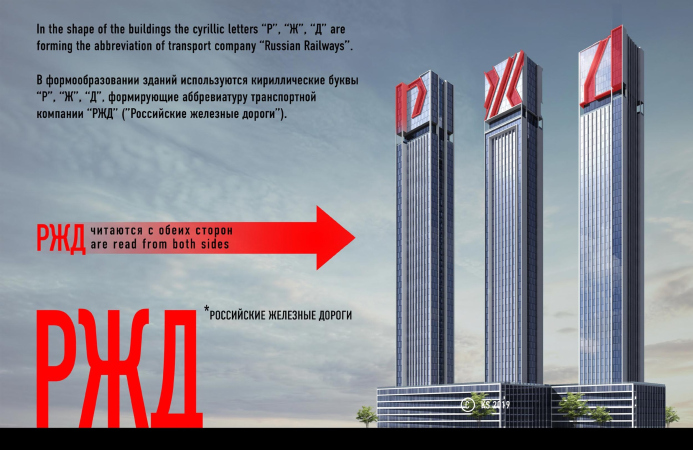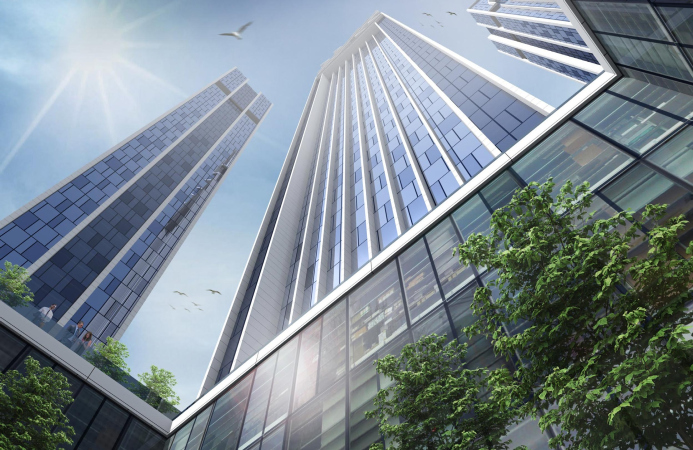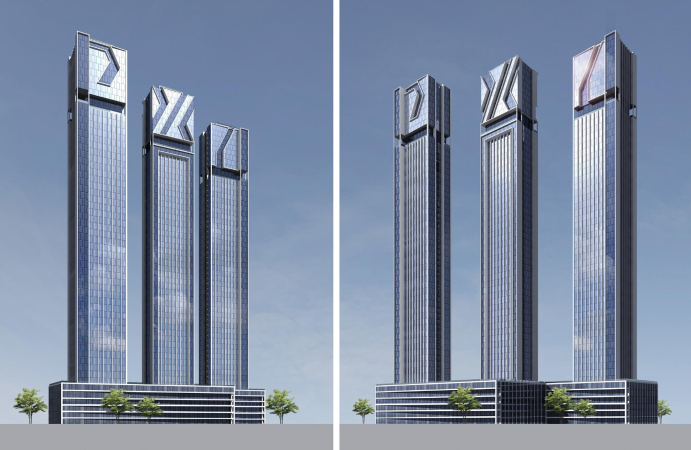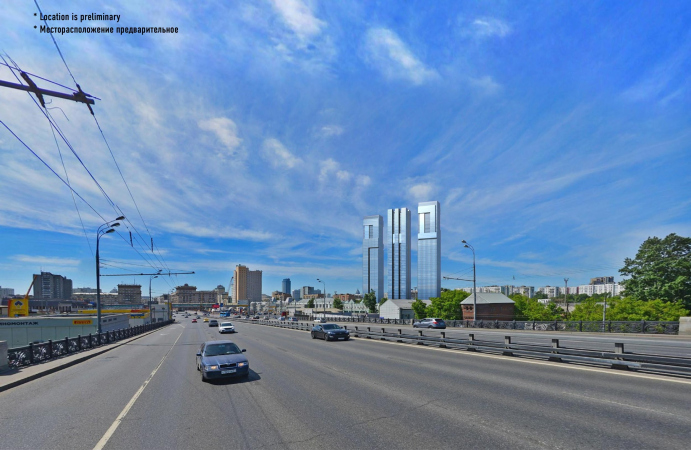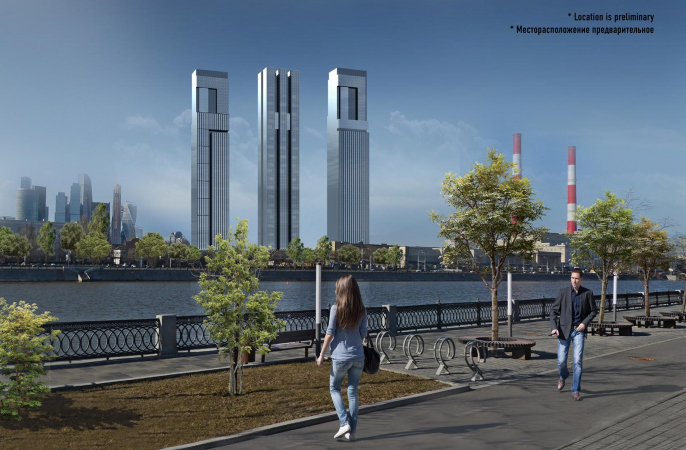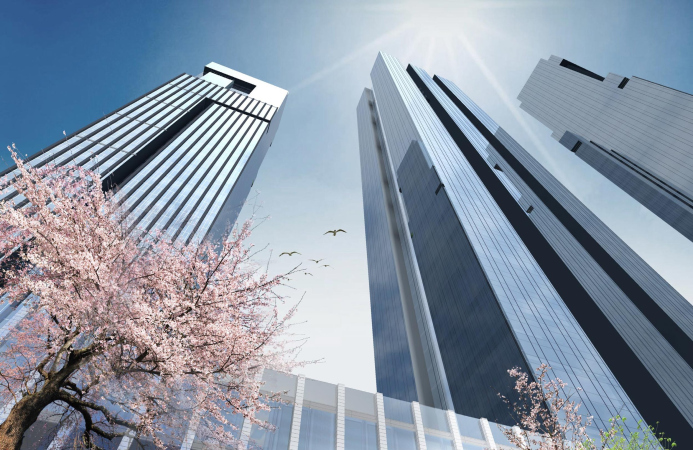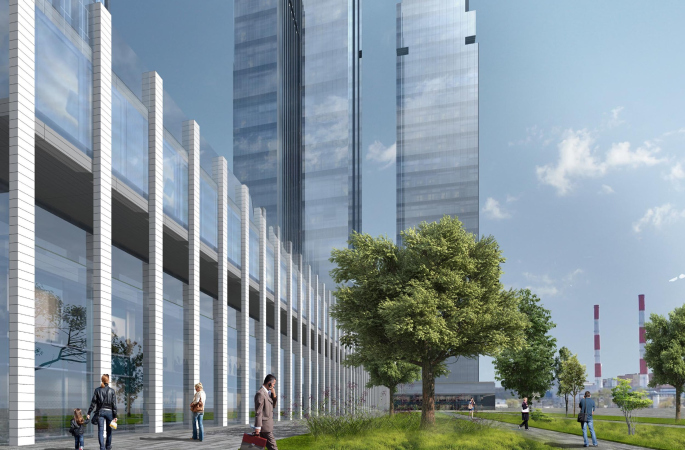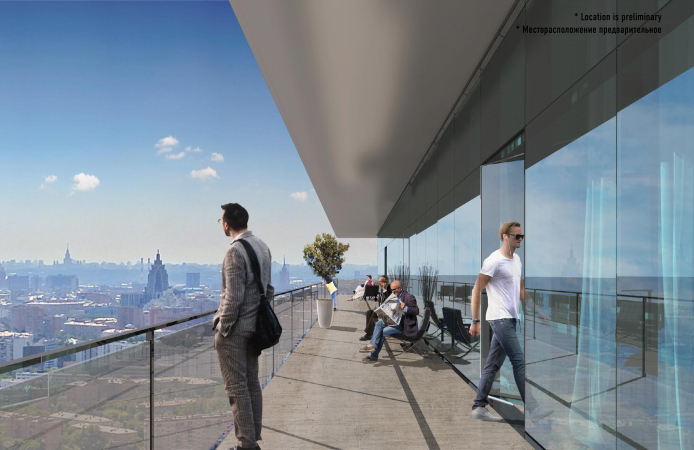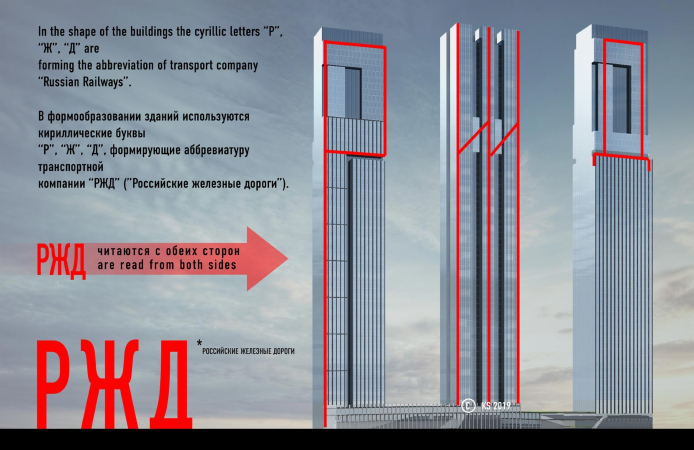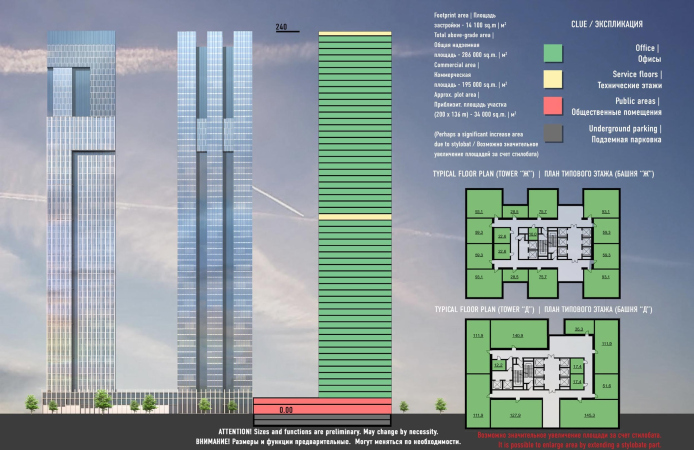As an answer to that project, and an answer to the very idea of building the headquarters, Karen Saprichyan came up with a project proposal of his own, in which the headquarters was presented as three slender towers with glass facades. Each of the towers “carries” one large letter, and together they form a gigantic RZD. The project was shown to the representatives of the company’s management, and, according to the architect, aroused some interest. However, this is where the story ended then: later on, in July 2019, an international competition was announced, which shortlisted chiefly large international companies, SOM being the most famous of them. From July to November, the finalists worked on their projects; the results of the competition, as far as we know, are to be announced any day now.
Meanwhile, we are publishing the project by Karen Saprichyan and GrandProjectCity, which was proposed in spring this year.
Version 1. The sketch project of RZD skyscrapers
Copyright: © GrandProektCity
The project is based on the author’s long-since-patented idea of a skyscraper that replicates, in this or that form, a signature letter or a group of letters: in this particular case, the acronym of RZD is divided between the three towers. The letters are placed rather high up in the air, and stylized in two different ways: in one version, they are ostentatiously “hacked” at 90-degree angles, in the other, diagonals prevail.
Version 1. The sketch project of RZD skyscrapers
Copyright: © GrandProektCity
Version 2. The sketch project of RZD skyscrapers
Copyright: © GrandProektCity
Otherwise, the skyscrapers are tall, slender, demonstrating laconic glass architecture, and looking pretty much like one another, which allows them to form a lineup for “carrying” the volumetric letters on their facades. The author specifically emphasizes: the letters will be seen from every conceivable angle, and, of course, from a distance. For example, while driving over the Rizhskaya flyover.
Version 1. The sketch project of RZD skyscrapers
Copyright: © GrandProektCity
Or sailing a boat down the Moskva River.
Version 1. The sketch project of RZD skyscrapers
Copyright: © GrandProektCity
In spite of the fact that already in March they were talking about building the headquarters on the territory of the Rizhsky freight terminal, GrandProjectCity also considered one of “backup” versions – a freight terminal on the Kiev Railway Station. It was this terminal that made the river panorama possible.
In the second version, the letters dominated by diagonals are backlit with red, which further indicates that what we are seeing is indeed the RZD headquarters.
The first the main version, designed for the territory of the Rizhsky Terminal, looks more pristine and is based on the parallelepiped features, which allows the letters to “grow into” the volume, literally merging with the buildings. The letters turn out to be, in the one hand, easily readable, and, on the other hand, clearly stylized; they make the skyscrapers look like a complete jigsaw puzzle consisting of large elements with different types glass surfaces interconnected in a sophisticated way.
The surfaces step forward and recede, forming ledges, accentuating the complexity of the building’s shape, yet keeping up its austere character in the spirit of prototypes of the 1970s. In the cold glitter of the metallic stripes, one can see the glitter of rails polished by the wheels, as well as a general reference to the technological, “steel” specifics of the operation of this giant that runs all of the nation’s railways.
Version 1. The sketch project of RZD skyscrapers
Copyright: © GrandProektCity
In this case, the format of the towers has two advantages. First of all, this format makes it possible to group all of the useful floor space in a compact way – the construction plans clearly show that a considerable part of the considered sites remains undeveloped. Second, and maybe even more importantly, the tower is a classical headquarters typology, tried and tested by the architecture of the XX century, high-profile and conspicuous. In this case, it is also joined by an iconic meaning: the skyscrapers that thrust the letters upwards, can be read as a sign of representativeness, like an unambiguous “dotted i”, which, in the case of headquarters must be quite appropriate, and even honest in a certain sense.
